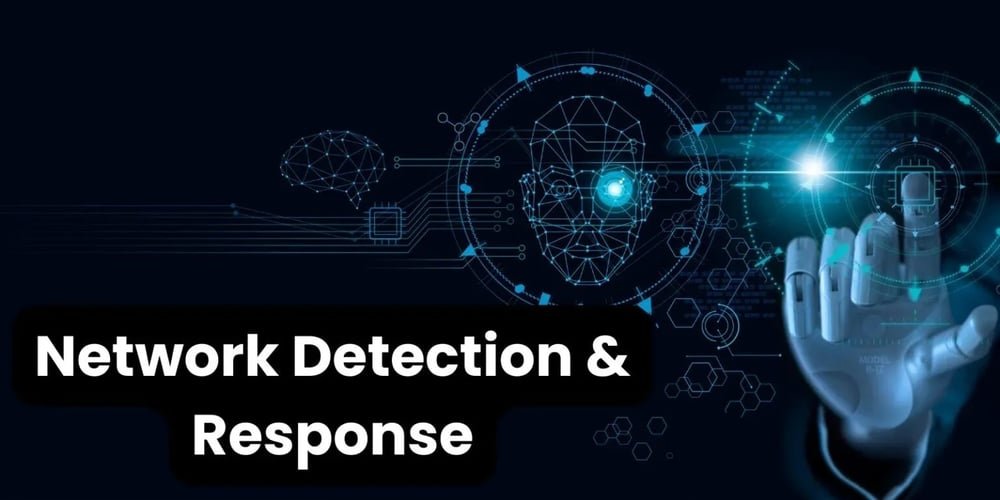In today’s cyber threat landscape, small and mid-sized businesses (SMBs) are increasingly becoming prime targets for cybercriminals. With limited security budgets and resources, many SMBs struggle to detect and respond to threats effectively. Network Detection and Response (NDR) solutions offer a powerful way for SMBs to enhance their cybersecurity posture by providing real-time monitoring, threat detection, and automated response capabilities.
Understanding NDR
Network Detection and Response (NDR) is a cybersecurity technology that continuously monitors network traffic to detect anomalies, identify potential threats, and respond to incidents in real time. Unlike traditional security solutions that rely on signature-based detection, NDR leverages advanced analytics, artificial intelligence (AI), and machine learning (ML) to detect both known and unknown threats.
NDR operates by analyzing data across an entire network, examining traffic flows, detecting unusual patterns, and alerting security teams to potential threats. This deep visibility allows businesses to uncover threats that may bypass traditional defenses like firewalls or antivirus software. Additionally, NDR can help detect insider threats, advanced persistent threats (APTs), and lateral movement by cybercriminals within the network.
Why SMBs Need NDR
SMBs often lack the resources to maintain a dedicated cybersecurity team, making them vulnerable to sophisticated cyber threats. NDR helps SMBs in several ways:
- Early Threat Detection – NDR continuously analyzes network traffic, identifying potential threats before they cause significant damage. Traditional security solutions may struggle with detecting unknown threats, but NDR’s AI-driven approach ensures that emerging threats are identified and addressed promptly.
- Automated Incident Response – By integrating with existing security tools, NDR can take automated actions to contain threats. This automation is crucial for SMBs that may not have a dedicated security operations center (SOC) to handle real-time incidents manually.
- Reduced Dwell Time – Faster detection and response help minimize the time attackers spend in the network. The longer a threat remains undetected, the more damage it can cause. NDR’s continuous monitoring significantly reduces the risk of prolonged exposure.
- Regulatory Compliance – Many industries require businesses to maintain strict security measures. NDR helps SMBs meet compliance standards by providing detailed visibility into network activity. Compliance frameworks such as GDPR, HIPAA, and PCI-DSS require organizations to maintain strong security controls, and NDR helps meet these standards with automated logging, reporting, and response capabilities.
- Cost-Effective Security – NDR reduces the need for expensive security teams by automating key security processes. SMBs can achieve enterprise-level security without requiring a large IT department. The cost savings from preventing breaches and minimizing downtime further justify the investment in NDR.
Implementing NDR in an SMB Environment
To effectively deploy NDR, SMBs should follow these steps:
- Assess Security Needs – Identify the most critical assets and potential threats to determine the level of protection required. Conduct a risk assessment to understand vulnerabilities and prioritize security investments.
- Choose the Right NDR Solution – Select an NDR solution that fits the business size, budget, and IT environment. Many vendors offer scalable options tailored to SMBs, ensuring a cost-effective and efficient implementation.
- Integrate with Existing Security Tools – Ensure seamless integration with firewalls, endpoint detection, and other security systems. An integrated approach enhances visibility and allows for a more coordinated response to threats.
- Monitor and Tune – Continuously monitor network activity and fine-tune detection rules to reduce false positives. NDR solutions often include machine learning algorithms that improve over time, refining threat detection capabilities.
- Train Employees – Educate staff on recognizing potential threats and responding to security alerts effectively. Cybersecurity awareness training helps prevent common attack vectors, such as phishing, and ensures employees understand their role in maintaining security.
Overcoming Common Challenges
While NDR offers significant benefits, SMBs may face challenges in adoption. Here are some common obstacles and how to overcome them:
- Limited IT Expertise – Many SMBs lack a dedicated cybersecurity team. To address this, businesses can opt for managed NDR services, where a third-party provider monitors and responds to threats on their behalf.
- Budget Constraints – SMBs may worry about the cost of implementing NDR. Many vendors offer flexible pricing models, including subscription-based services that scale with business needs.
- Integration Complexity – Ensuring compatibility with existing security infrastructure can be challenging. Working with vendors that provide easy-to-deploy solutions and strong customer support can simplify the process.
The Future of NDR for SMBs
As cyber threats continue to evolve, NDR will become an essential component of SMB cybersecurity strategies. Advances in AI and machine learning will further enhance threat detection capabilities, reducing false positives and improving response times. Additionally, the increasing availability of cloud-based NDR solutions will make it easier for SMBs to adopt and implement network security without requiring extensive on-premises infrastructure.
Conclusion
With the increasing volume and sophistication of cyber threats, SMBs cannot afford to overlook network security. NDR provides an effective way to enhance threat detection and response capabilities without requiring extensive cybersecurity expertise. By leveraging NDR, SMBs can protect their assets, maintain compliance, and ensure business continuity in an ever-evolving digital landscape.
By investing in the right NDR solution, SMBs can achieve a level of cybersecurity that was once only accessible to large enterprises. With automation, AI-driven analytics, and continuous monitoring, NDR empowers SMBs to stay ahead of cyber threats and safeguard their operations effectively.















































